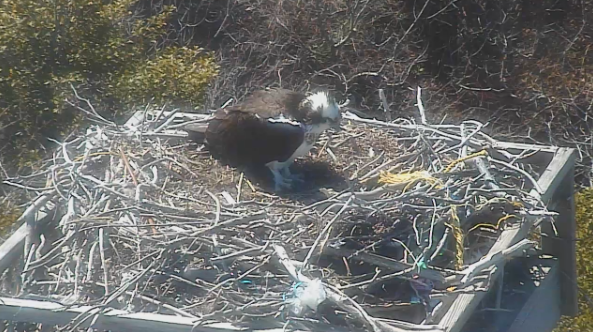
An osprey in a nest at Island Beach State Park, as shown on the popular Osprey Cam. (Photo: Osprey Cam)
Ospreys have returned to Island Beach State Park for the 2015 breeding season. The birds of prey have across the Shore area have started to come back after completing their migration northward, and the first birds to return to Island Beach State Park can be seen on the park’s popular Osprey Cam.
The birds returned Friday, park observers said. The live camera, sponsored by the Friends of Island Beach State Park organization, is in its fourth season.
Osprey migration patterns largely follow fish migration patterns. The birds fly south when cold weather arrives, driving fish to warmer waters. Likewise, the ospreys return when fish begin to return to their northern haunts. Just this week, a school of bunker was spotted at the mouth of the Toms River at Barnegat Bay – not coincidentally just a day before the first ospreys were spotted.
|
|
Naturalists have been eagerly awaiting the return of the ospreys for the 2015 season after statistics released in December showed that the state’s osprey population reached historically high levels last year.
When the osprey surveys started in 1973, there were only 53 nesting pairs. In 2014, there were 542. The surveys are undertaken by a dedicated group of state biologists and volunteers who scour the coastal areas of the state in search of nests. They target the most densely-populated osprey colonies from the Meadowlands to Cape May, and out west along the banks of the Delaware River.
The Barnegat Bay area of the state, including Island Beach State Park, had among the state’s largest number of ospreys in a given locale. There were 53 nests in the bay region and 25 in the Sedge Island management area in the bay waters off the park, which produced a combined total of 80 young. Of those, 57 were banded so they could be tracked.
Ospreys are tracked by a citizen-science project known as Project RedBand.

Advertisement

Police, Fire & Courts
Teacher From Brick, 36, Charged With Carrying on Affair With Student
Brick Life
Adult Autism Transition

Police, Fire & Courts
Teacher From Brick Charged in Another Sex Affair With Student








